NCERT Solutions for Class 8 Science Chapter 7 - Particulate Nature of Matter
Have you ever thought about what everything around us is made of? What makes solids, liquids, and gases different from each other? And why does sugar dissolve in water, but sand does not? The answer to all these questions lies in particulate nature of matter ncert solutions. This chapter helps students explore how all substances are made up of tiny particles. This also introduces the basic structure of matter, differences between atoms and molecules, how these particles behave in solids, liquids, and gases and how matter changes its physical state through various methods.
This Story also Contains
- NCERT Solutions for Class 8 Science Chapter 7: Download PDF
- NCERT Solutions for Class 8 Science Chapter 7 ( Exercise Questions with Answers)
- Approach to Solve the Question of Class 8 Science Chapter 7
- Important Questions and Answers from Class 8 Science Chapter 7: Particulate Nature of Matter
- Topic Covered in Class 8 Chapter 7: Particulate Nature of Matter
- What Students Learn from NCERT Solutions for Class 8 Science Chapter 7
- Why Class 8 Science Chapter 7 Particulate Nature of Matter NCERT Solutions are Important?
- NCERT Chapter-Wise Solutions For Class 8 Science
- NCERT Solutions For Class 8 Subject-Wise
- NCERT Books and NCERT Syllabus
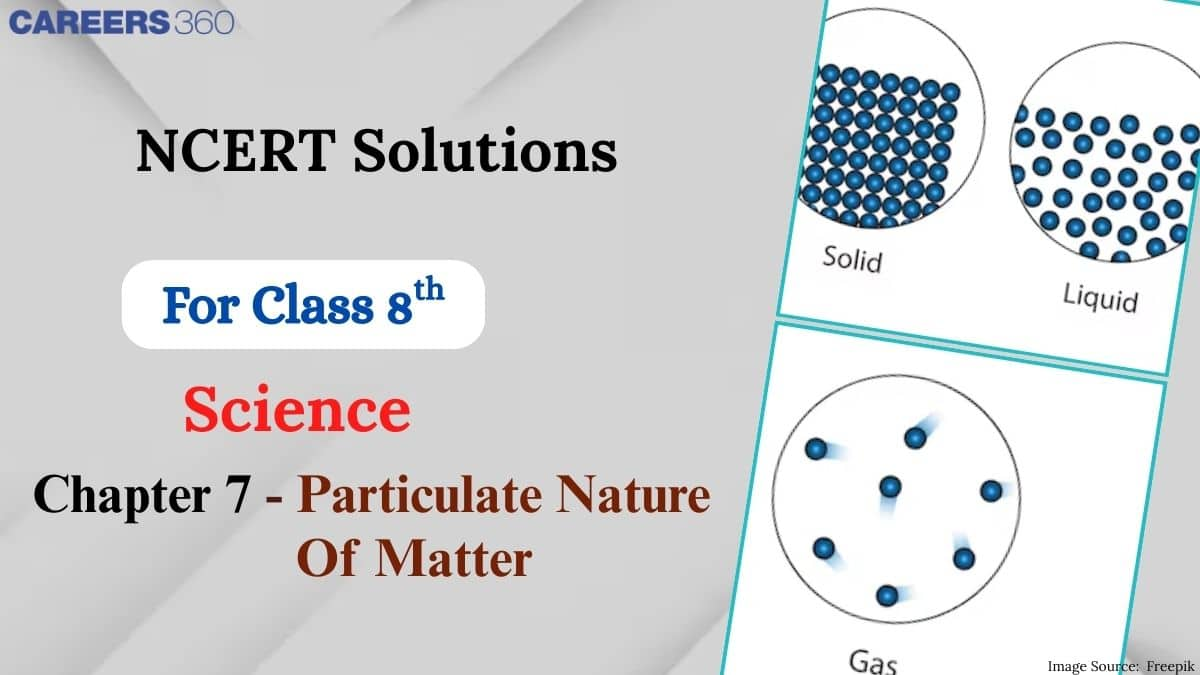
NCERT Solutions provide a valuable resource to students for improving their performance in board exams. Our subject matter experts ensure that students can gain maximum knowledge of the chapter. These NCERT Solutions for Class 8 are designed by our experienced subject experts in a very systematic and comprehensive way to develop a clear understanding of complex problems through a series of solved exercise questions and conceptual explanations.
NCERT Solutions for Class 8 Science Chapter 7: Download PDF
Students can download the NCERT Solution for Class 8 Science Chapter 7 particulate nature of matter pdf from the icon given below. These Solutions of NCERT are designed to help you understand the fundamental concepts and solve textbook questions with ease.
NCERT Solutions for Class 8 Science Chapter 7 ( Exercise Questions with Answers)
Find accurate and detailed chapter end particulate nature of matter class 8 question answer given in the textbook. These solutions make it easier for students to revise key concepts and practise different types of questions effectively.
Keep The Curiosity Alive
Question 1. Choose the correct option. The primary difference between solids and liquids is that the constituent particles are:
(i) Closely packed in solids, while they are stationary in liquids.
(ii) Far apart in solids and have fixed positions in liquids.
(iii) Always moving in solids and have a fixed position in liquids.
(iv) Closely packed in solids and move past each other in liquids.
Answer:
The primary difference between solids and liquids is:
Solid particles are always in a close-packed shape and cannot move freely, while liquids are close together and move past each other, allowing liquids to flow freely.
Hence, the correct answer is option (iv).
Question 2. Which of the following statements are true? Correct the false statements.
(i) Melting ice into water is an example of the transformation of a solid into a liquid.
(ii) The melting process involves a decrease in interparticle attractions during the transformation.
(iii) Solids have a fixed shape and a fixed volume.
(iv) The interparticle interactions in solids are very strong, and the interparticle spaces are very small.
(v) When we heat camphor in one corner of a room, the fragrance reaches all corners of the room.
(vi) On heating, we are adding energy to the camphor, and the energy is released as a smell.
Answer:
(i) True: The process of ice turning into water is an example of a solid changing into a liquid, as ice in its solid state melts to become liquid water.
(ii) True: The attraction between particles decreases during melting. As the solid is heated, its particles absorb energy and vibrate more frequently, which allows them to move more freely and transition into the liquid state.
(iii) True: Due to a closed-packed shape, Solids have a fixed shape and a fixed volume, which is a defining property of solids.
(iv) True: Fixed shape and fixed volume are defining properties of solids. That’s why the interparticle interactions in solids are very strong, and the interparticle spaces are very small.
(v) False:
Correct statement: Camphor undergoes sublimation, which means it directly changes from a solid to a gas. These gas particles then diffuse through the air and carry the smell to all parts of the room. Therefore, the spreading of fragrance is not only because of heating.
(v) False:
Correct statement: The smell doesn’t come from energy being released. Camphor undergoes sublimation, which means it directly changes from a solid to a gas. The vaporized particles of camphor disperse into the air, and these particles produce the fragrance, not the energy itself.
Question 3. Choose the correct answer with justification. If we could remove all the constituent particles from a chair, what would happen?
(i) Nothing will change.
(ii) The chair will weigh less due to lost particles.
(iii) Nothing of the chair will remain
Answer:
A chair is made up of tiny particles such as atoms and molecules. If all of these particles were removed, then there would be no matter left, and the chair would completely disappear. Removing all the constituent particles would leave nothing behind.
Hence, the correct answer is option (iii).
Question 4. Why do gases mix easily, while solids do not?
Answer:
Gases mix easily because they are completely free to move in all directions, which allows gas particles to occupy any available space and makes them mix with other particles easily. While solids have a tightly packed shape and strong intermolecular forces, they can vibrate but can not move freely. That’s why they do not mix easily.
Question 5. When spilled on the table, milk in a glass tumbler flows and spreads out, but the glass tumbler stays in the same shape. Justify this statement.
Answer:
Milk is a liquid; it follows the properties of a liquid. As we know, liquids have a loosely packed shape and are also completely free to move, which allows them to flow. That’s why milk spreads when spilled.
A glass tumbler is a solid; it follows the properties of a solid. As we know, solids have a tightly-packed shape and strong intermolecular forces, and they are not free to move, which does not allow them to flow, resulting in solids having a fixed shape and volume; therefore, they always stay in the same shape.
Question 6. Represent diagrammatically the changes in the arrangement of particles as ice melts and transforms into water vapor.
Answer:
The changes in the arrangement of particles as ice melts and transforms into water vapor:

Question 7. Draw a picture representing particles present in the following:
(i) Aluminium foil
(ii) Glycerin
(iii) Methane gas
Answer:
(i) A picture representing particles present in the Aluminium foil: It is a solid, so it will have a solid-like particle arrangement (regular pattern and close together), which is given below.

(ii) A picture representing particles present in the glycerin: It is a liquid, so it will have a liquid-like particle arrangement (irregular pattern and close together) , which is given below.
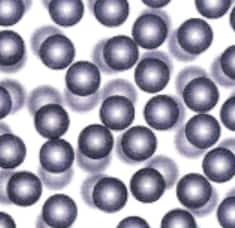
(iii) A picture representing particles present in the methane gas: It is a gas, so it will have a gas-like particle arrangement (irregular pattern and far apart), which is given below.
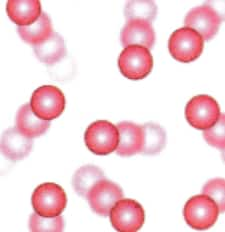
Question 8. Observe Fig. 7.16(a), which shows the image of a candle that was just extinguished after burning for some time. Identify the different states of wax in the figure and match them with Fig. 7.16(b), showing the arrangement of particles.

Fig. 7.16(a)
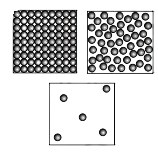
Fig. 7.16(b)
Answer:
Different states of wax:
Solid wax: Unmelted part of the candle
Arrangements of particles in solid wax:

Liquid wax: Near the wick, heat from the flame melts the solid wax into a liquid.
Arrangements of particles in liquid wax:

Vapour wax (Gas): When the candle is burning, due to the high temperature near the flame, some of the liquid wax vaporizes.
Arrangements of particles in vapour wax:
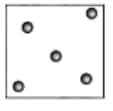
Question 9. Why does the water in the ocean taste salty, even though the salt is not visible? Explain.
Answer:
Ocean water has a salty taste because it contains various dissolved salts, mainly sodium chloride (NaCl). These salts are released from rocks through natural processes. Rainwater dissolves the minerals from rocks, and rivers carry them into the ocean, where the salts have been collecting for millions of years. It is fully dissolved in the water. At the molecular level, it breaks down into tiny sodium and chloride ions, which can not be seen with the naked eye.
Question 10. Grains of rice and rice flour take the shape of the container when placed in different jars. Are they solids or liquids? Explain.
Answer:
Grains of rice and rice flour are solids that have a fixed shape and volume. They do not flow freely like a liquid at the particle level (defining property of solids). However, when large numbers of these solid particles are poured into a container, they settle and spread out, making it look like they are taking the shape of the container, but this is due to their small size and loose arrangement, not because they are liquids.
Approach to Solve the Question of Class 8 Science Chapter 7
Sometimes class 8 science chapter 7 particulate nature of matter question answer seem very difficult, but once we understand the basic rules and strategy, it becomes very easy to solve all the questions related to that particular topic. NCERT Solutions for Class 8 Science can be solved easily by following the steps given below:
1. Before attempting questions, make sure you clearly know the topics, like What are solids, liquids, and gases? The differences between them e.g., defining properties, phase change methods, etc and the types of phase change methods, such as melting, boiling, sublimation, evaporation, etc.
2. Look for words like particle arrangement, structure, shape, solids, liquids, gases, different properties, phase change methods, etc., as they will help you decide whether it is a solid, liquid or gas. You can learn these concepts from the particulate nature of matter ncert solutions.
3. You can use a table to classify the solids, liquids, and gases. This will help you a lot in answering the questions. Also, learn the difference between the phase change methods, such as sublimation, condensation, evaporation, etc
4. Practice as many questions as asked in previous board exams and solve mock tests. Also, solve all the questions given in the NCERT solution for Class 8 Science Chapter 7 Particulate Nature of Matter to score well in exams.
5. The activities discussed in this chapter are so important and are often asked in exams. Do practice them attentively. Also, focus on true-false and explanation-based questions as they are crucial to understanding.
Important Questions and Answers from Class 8 Science Chapter 7: Particulate Nature of Matter
These class 8 science particulate nature of matter question answer cover the key concepts helping students understand the behaviour of particles and changes in states of matter.
Question 1. What is the particulate nature of matter?
Answer: The particulate nature of matter means that all matter is made up of tiny particles called atoms and molecules. These particles are always in motion and have spaces between them.
Question 2. How temperature affects the movement of particles.
Answer: With the increase in temperature particles move faster, while with decrease in temperature their motion slows down. This is why heating can cause solids to melt or liquids to boil.
Question 3. Describe the processes of melting?
Answer: Melting is the process in which a solid changes into a liquid when heat is applied. During melting, the particles of the solid gain energy, start vibrating more vigorously, and eventually overcome the forces holding them in fixed positions.
Question 4. What is diffusion?
Answer: Diffusion is the process in which particles of a substance spread evenly throughout another substance.For example smell of perfume spreading in a room.
Question 5. Why do solids have a fixed shape?
Answer: In solids, particles are tightly packed in fixed positions, giving them a definite shape.
Topic Covered in Class 8 Chapter 7: Particulate Nature of Matter
Given below the topics and subtopics covered in class 8 science chapter 7 particulate nature of matter solutions. Students can also refer to the NCERT textbook for a complete understanding of all the topics.
7.1 What Is Matter Composed of?
7.2 What Decides Different States of Matter?
- 7.2.1 Solid state
- 7.2.2 Liquid state
- 7.2.3 Gaseous state
7.3 How Does the Interparticle Spacing Differ in the Three States of Matter?
7.4 How Particles Move in Different States of Matter?
What Students Learn from NCERT Solutions for Class 8 Science Chapter 7
The class 8 science chapter 7 particulate nature of matter solutions provide a clear explanation of the fundamental concept of matter. These solutions simplify complex concepts and help students build a strong foundation for higher studies.
- These solutions help students to explains what matter is, and from what it is made of, highlighting that matter is made up of tiny particles that are too small to be seen with the naked eye.
- Here properties of matter, such as diffusion and compressibility are explaines with the help of solved questions.
- These solutions help students to explain the differences between solids, liquids, and gases on the basis of particle arrangement and movement.
- These class 8 science chapter 7 particulate nature of matter question answer are designed in such a way that they help students connect theoretical concepts with real-life examples.
Why Class 8 Science Chapter 7 Particulate Nature of Matter NCERT Solutions are Important?
These particulate nature of matter class 8 question answers provide students with a clear and systematic understanding of how matter is made up of tiny particles. Given below are some points on how these NCERT solutions help students:
1. These solutions help students to understand the behaviour and properties of particles in solids, liquids, and gases.
2. They provide systematic explanations of each question.
3. Using these class 8 science particulate nature of matter question answer help students to cover all important questions which are useful for scoring good marks in exams.
4. Students learn how particle behaviour explains everyday phenomena like melting, boiling, and condensation.
NCERT Chapter-Wise Solutions For Class 8 Science
Besides particulate nature of matter ncert solutions, chapter-wise solutions are given below:
NCERT Solutions For Class 8 Subject-Wise
NCERT Subject-wise solutions for class 8 are given below:
NCERT Books and NCERT Syllabus
The NCERT books and syllabus links for class 8 are given below:
Frequently Asked Questions (FAQs)
You can identify whether matter is solid or gas by looking at the arrangement and behaviour of its particles. In solids, particles are tightly packed, have a fixed shape, and only vibrate in place. In gases, particles are far apart, move freely in all directions, and have neither a fixed shape nor volume.
The class 8 science chapter 7 particulate nature of matter solutions are step by step answers to the textbook questions. They help students understand how matter is made up of tiny particles, explain its properties, and strengthen conceptual learning for exams.
The key characteristics of particles include that they are very small, have spaces between them, are in constant motion, and have forces of attraction between them.
NCERT Class 8 Science Chapter 7 Particulate Nature of Matter explains that in solids, particles are tightly packed and vibrate in place, making them rigid. In liquids, particles are close but can move past one another, allowing liquids to flow. In gases, particles are far apart and move freely, which explains why gases can occupy larger volumes.
Topics covered in the Class 8 Science Chapter 7 Question Answers?
What is matter composed of?
What decides different states of matter?
How does the interparticle spacing differ in the three states of matter?
How do particles move in different states of matter?
Sublimation: It is a process in which a solid changes directly into a gas without passing through the liquid state. For example, Camphor and naphthalene balls disappear over time because they sublime.
Popular Questions
Courses After 12th
Applications for Admissions are open.
This ebook serves as a valuable study guide for NEET 2025 exam.
NEET Previous 10 Year Questions
Get nowThis e-book offers NEET PYQ and serves as an indispensable NEET study material.
JEE Main Important Physics formulas
Get nowAs per latest syllabus. Physics formulas, equations, & laws of class 11 & 12th chapters
JEE Main Important Chemistry formulas
Get nowAs per latest syllabus. Chemistry formulas, equations, & laws of class 11 & 12th chapters
JEE Main high scoring chapters and topics
Get nowAs per latest 2024 syllabus. Study 40% syllabus and score upto 100% marks in JEE
JEE Main Important Mathematics Formulas
Get nowAs per latest syllabus. Maths formulas, equations, & theorems of class 11 & 12th chapters
